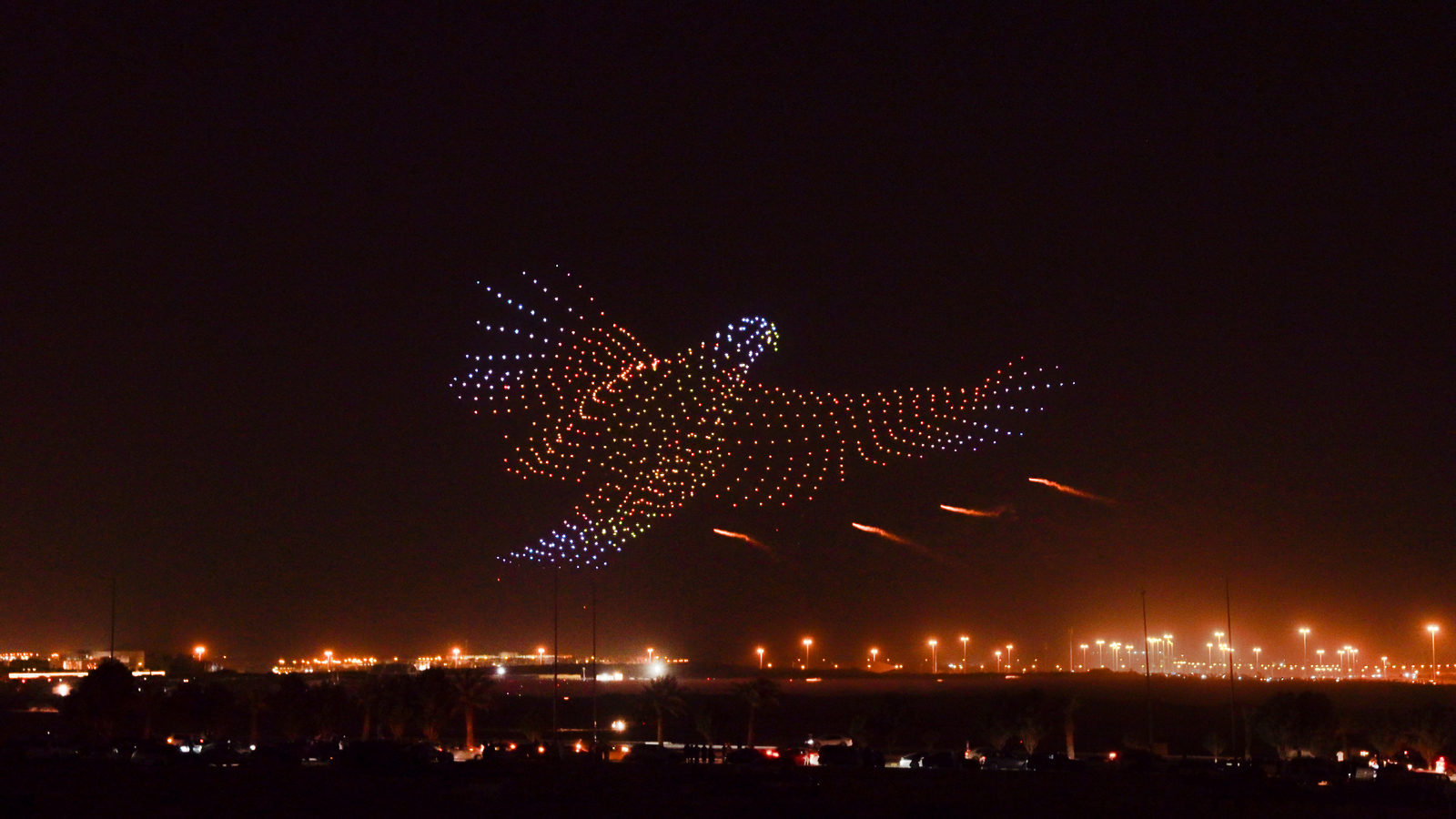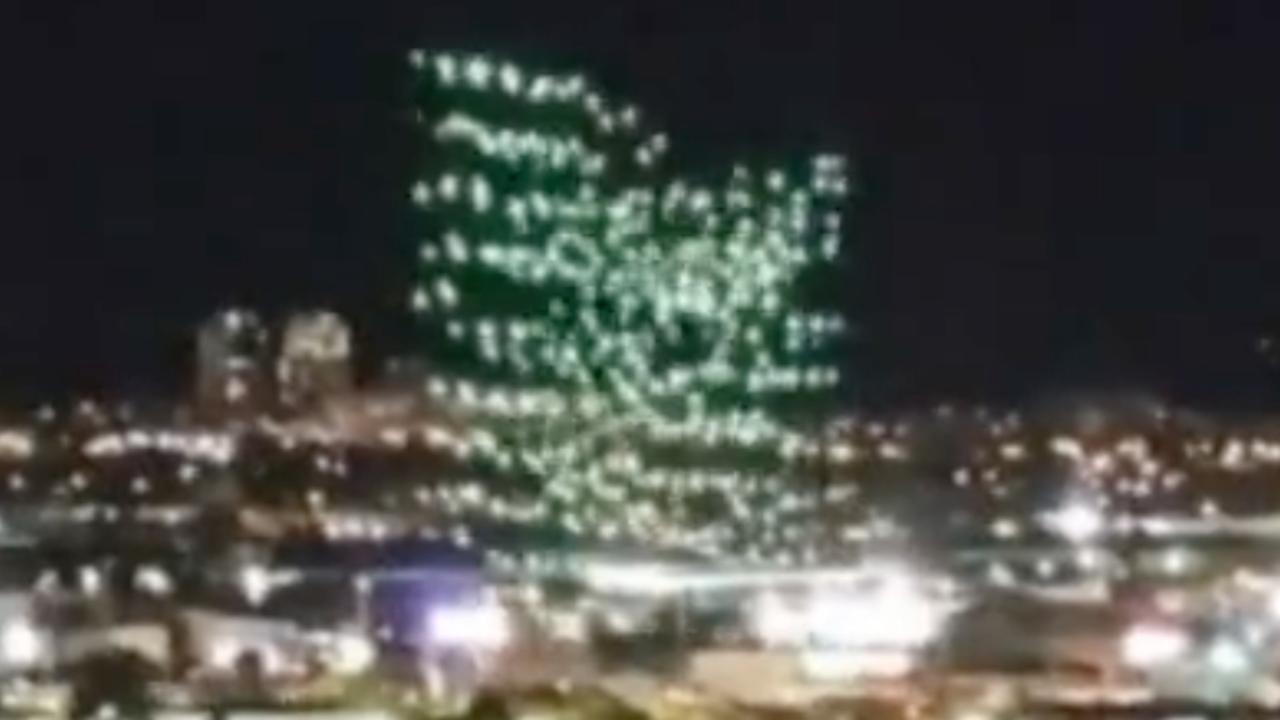Orlando Drone Show Malfunction: A spectacular drone show over Orlando suffered an unexpected setback, captivating and alarming onlookers alike. This incident serves as a case study in the complexities of large-scale drone operations, highlighting both the technological marvels and inherent risks involved. We will delve into the event details, exploring the malfunction’s nature, potential causes, and the subsequent response, examining the safety protocols and the public’s reaction.
This analysis will explore the technical aspects of the malfunction, considering potential software glitches, hardware failures, and human error. We will also investigate the existing safety regulations and suggest improvements to prevent similar incidents. The incident’s aftermath, including investigations, apologies, and lessons learned, will be examined, providing a comprehensive understanding of this significant event.
Orlando Drone Show Malfunction: A Comprehensive Analysis
The recent malfunction during a drone show in Orlando has sparked discussions about the safety and reliability of this increasingly popular form of entertainment. This article delves into the specifics of the incident, examining the event details, the nature of the malfunction, potential causes, safety protocols, public reaction, and the implications for drone technology and regulations.
Event Details, Orlando drone show malfunction
The drone show, organized by [Company Name], took place on [Date] at [Time] in [Location, Orlando]. The planned show featured a [Description of the show theme, e.g., spectacular light display depicting various scenes or characters]. The planned sequence involved a precisely choreographed flight pattern for approximately [Number] drones, each drone model being a [Drone Model, Manufacturer], with specifications including [Key Specifications, e.g., battery life, flight time, GPS capabilities].
The show was expected to last approximately [Duration], with specific segments timed to coincide with musical cues and narrative elements.
Malfunction Description
The malfunction began at approximately [Time during the show]. A significant portion of the drones, estimated at [Number] deviated from their programmed flight paths. This deviation manifested as [Description of the visual effects, e.g., erratic movements, uncontrolled drifting, lights flickering erratically]. The malfunction lasted for approximately [Duration of malfunction], causing a disruption to the show’s intended visual narrative and creating a scene of confusion and concern among the audience.
The visual impact was described by spectators as [Descriptions from spectators, e.g., chaotic, alarming, or disappointing].
Potential Causes

Several factors could have contributed to the malfunction. Technical issues, such as software glitches in the drone’s flight control system or communication failures between the drones and the control system, are strong possibilities. Hardware failures, including malfunctioning GPS modules or battery issues, could also be considered. Furthermore, human error, such as inadequate pre-flight checks or pilot error during the operation of the control system, cannot be ruled out.
Considering the sudden and widespread nature of the malfunction, a software glitch affecting multiple drones simultaneously appears more likely than isolated hardware failures.
Reports of an Orlando drone show malfunction surfaced recently, raising concerns about the technology’s reliability in large-scale displays. Fortunately, such incidents are relatively rare, and the overall experience of attending a well-executed show, like those showcased at the orlando drone show , remains highly positive. However, the malfunction highlights the importance of rigorous testing and safety protocols to prevent future issues during these spectacular events.
Safety Protocols and Procedures
Prior to the malfunction, safety measures likely included [Description of existing safety measures, e.g., pre-flight checks, emergency landing procedures, designated flight zones, and audience safety zones]. During the malfunction, the response was likely to involve [Description of emergency procedures, e.g., activating emergency landing protocols, attempting to regain control of the drones, and securing the area]. To improve safety, a more robust system with redundant communication channels and enhanced error detection capabilities should be implemented.
The recent Orlando drone show malfunction highlighted the inherent risks in large-scale drone displays. One wonders if the reliability issues experienced might have been mitigated with a different drone provider, perhaps one like sky elements drones , known for their robust technology. Ultimately, the Orlando incident underscores the need for stringent safety protocols and advanced drone systems to prevent future malfunctions.
This includes regular maintenance and rigorous testing of all components.
| Protocol Element | Existing Protocol | Proposed Improvement | Justification |
|---|---|---|---|
| Communication System | Single communication channel | Redundant communication channels (e.g., multiple frequencies) | Reduces risk of total communication failure |
| Pre-flight Checks | Visual inspection | Automated pre-flight diagnostic system | Identifies potential hardware/software issues before flight |
| Emergency Procedures | Manual override and emergency landing | Automated emergency landing system with failsafe mechanisms | Faster and more reliable response in case of malfunction |
| Fail-safe Mechanisms | Limited failsafe measures | Multiple independent failsafe systems (e.g., GPS, altitude hold) | Prevents catastrophic failures |
Public Reaction and Media Coverage
Social media platforms were flooded with comments ranging from expressions of concern and disappointment to humorous memes and criticisms of the show’s organizers. News reports, initially focusing on the visual spectacle of the malfunction, later delved into the potential causes and safety implications. The incident significantly impacted the event’s reputation, raising questions about the safety of large-scale drone shows and leading to discussions about stricter regulations.
Drone Technology and Regulations
Current drone technology, while advanced, still has limitations, particularly in terms of robustness and resilience to unexpected events. Regulations governing drone shows vary, with some regions having more stringent rules than others. The Orlando malfunction highlights the need for comprehensive regulations that address potential risks and ensure adequate safety protocols are in place. The incident underscores the need for improved standards for drone software, hardware, and operator training, as well as stricter enforcement of existing regulations.
Aftermath and Lessons Learned
Following the malfunction, [Company Name] likely conducted a thorough investigation to determine the root cause. This likely included reviewing flight logs, examining the drones for hardware failures, and analyzing the software for glitches. The company likely issued an official statement addressing the incident and offering refunds or alternative forms of compensation to attendees. The incident serves as a valuable lesson emphasizing the need for continuous improvement in drone technology, rigorous testing, comprehensive safety protocols, and effective regulatory frameworks to mitigate risks and ensure public safety during future drone shows.
The Orlando drone show malfunction underscores the critical need for robust safety protocols and rigorous testing in large-scale drone operations. While drone technology continues to advance, the potential for unforeseen technical issues and human error remains. A thorough review of this incident offers valuable insights for improving safety procedures, refining technological advancements, and strengthening regulatory frameworks to ensure future drone shows are both spectacular and safe.
The lessons learned from this event are crucial for the continued growth and responsible development of the drone industry.
FAQ Corner
What type of drones were used in the Orlando show?
This information would need to be sourced from official reports or news articles covering the event.
Were there any injuries reported as a result of the malfunction?
Information on injuries would be available in official reports or news coverage. Absence of such reports in readily available sources would suggest no injuries were reported.
The Orlando drone show malfunction highlights the complexities of large-scale drone operations. Such incidents underscore the need for robust safety protocols, a point further emphasized by considering the recent events in a different context; for instance, the sophisticated drone technology involved in the ukraine drone attack on russia demonstrates both the potential and the inherent risks associated with unmanned aerial vehicles.
Therefore, improving the reliability and safety of drone technology remains crucial, especially given the increasing reliance on these systems for both entertainment and military purposes.
What was the financial impact of the malfunction on the event organizers?
The financial impact would likely be determined by factors such as refunds issued, repair costs, and potential loss of future business. This information may not be publicly available.
What specific actions did the company take to address the malfunction and prevent future incidents?
Specific actions would be found in official statements or reports released by the company responsible for the show.

